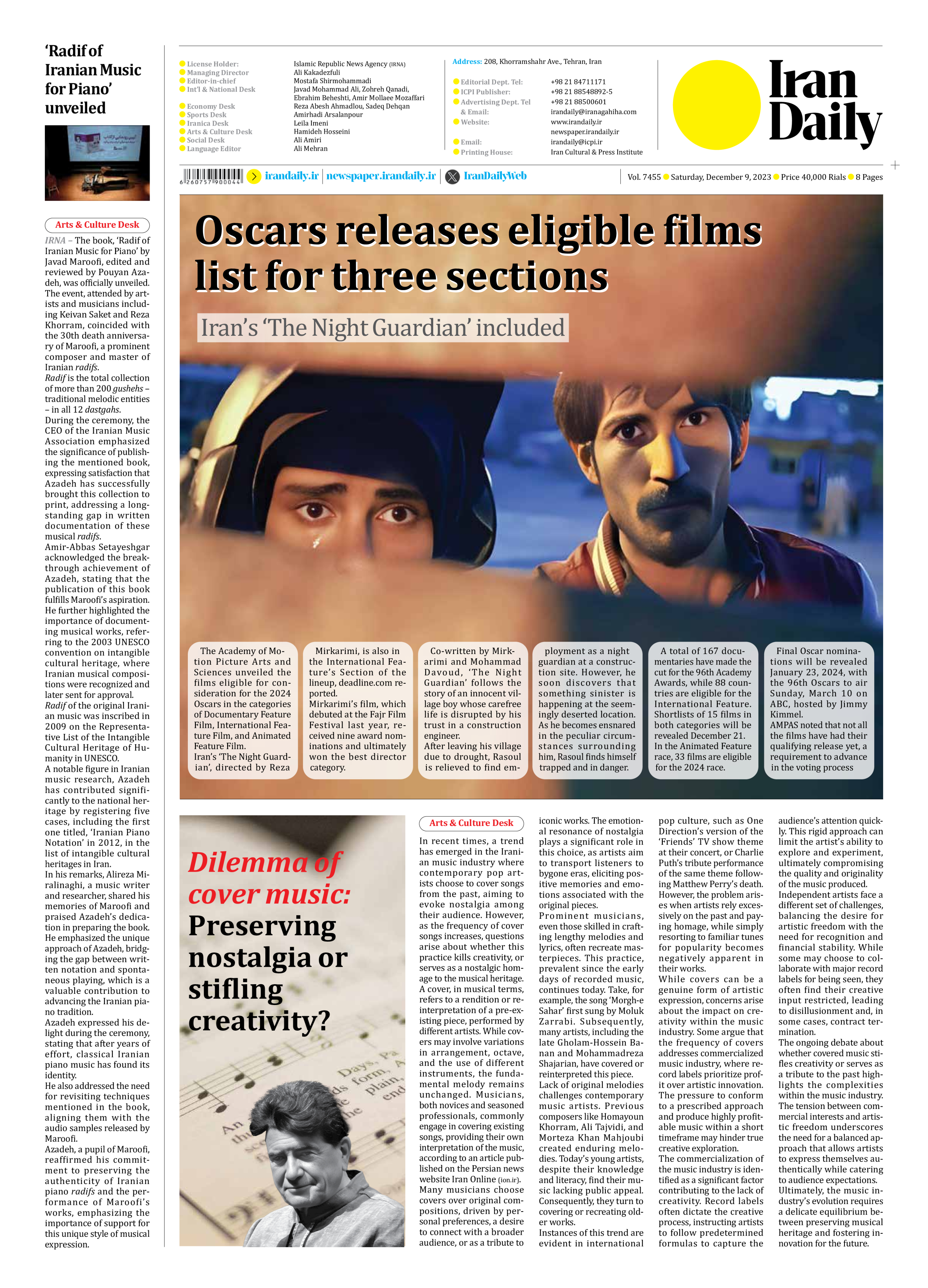
Dilemma of cover music: Preserving nostalgia or stifling creativity?
In recent times, a trend has emerged in the Iranian music industry where contemporary pop artists choose to cover songs from the past, aiming to evoke nostalgia among their audience. However, as the frequency of cover songs increases, questions arise about whether this practice kills creativity, or serves as a nostalgic homage to the musical heritage.
A cover, in musical terms, refers to a rendition or reinterpretation of a pre-existing piece, performed by different artists. While covers may involve variations in arrangement, octave, and the use of different instruments, the fundamental melody remains unchanged. Musicians, both novices and seasoned professionals, commonly engage in covering existing songs, providing their own interpretation of the music, according to an article published on the Persian news website Iran Online (ion.ir).
Many musicians choose covers over original compositions, driven by personal preferences, a desire to connect with a broader audience, or as a tribute to iconic works. The emotional resonance of nostalgia plays a significant role in this choice, as artists aim to transport listeners to bygone eras, eliciting positive memories and emotions associated with the original pieces.
Prominent musicians, even those skilled in crafting lengthy melodies and lyrics, often recreate masterpieces. This practice, prevalent since the early days of recorded music, continues today. Take, for example, the song ‘Morgh-e Sahar’ first sung by Moluk Zarrabi. Subsequently, many artists, including the late Gholam-Hossein Banan and Mohammadreza Shajarian, have covered or reinterpreted this piece.
Lack of original melodies challenges contemporary music artists. Previous composers like Homayoun Khorram, Ali Tajvidi, and Morteza Khan Mahjoubi created enduring melodies. Today’s young artists, despite their knowledge and literacy, find their music lacking public appeal. Consequently, they turn to covering or recreating older works.
Instances of this trend are evident in international pop culture, such as One Direction’s version of the ‘Friends’ TV show theme at their concert, or Charlie Puth’s tribute performance of the same theme following Matthew Perry’s death.
However, the problem arises when artists rely excessively on the past and paying homage, while simply resorting to familiar tunes for popularity becomes negatively apparent in their works.
While covers can be a genuine form of artistic expression, concerns arise about the impact on creativity within the music industry. Some argue that the frequency of covers addresses commercialized music industry, where record labels prioritize profit over artistic innovation. The pressure to conform to a prescribed approach and produce highly profitable music within a short timeframe may hinder true creative exploration.
The commercialization of the music industry is identified as a significant factor contributing to the lack of creativity. Record labels often dictate the creative process, instructing artists to follow predetermined formulas to capture the audience’s attention quickly. This rigid approach can limit the artist’s ability to explore and experiment, ultimately compromising the quality and originality of the music produced.
Independent artists face a different set of challenges, balancing the desire for artistic freedom with the need for recognition and financial stability. While some may choose to collaborate with major record labels for being seen, they often find their creative input restricted, leading to disillusionment and, in some cases, contract termination.
The ongoing debate about whether covered music stifles creativity or serves as a tribute to the past highlights the complexities within the music industry. The tension between commercial interests and artistic freedom underscores the need for a balanced approach that allows artists to express themselves authentically while catering to audience expectations.
Ultimately, the music industry’s evolution requires a delicate equilibrium between preserving musical heritage and fostering innovation for the future.







